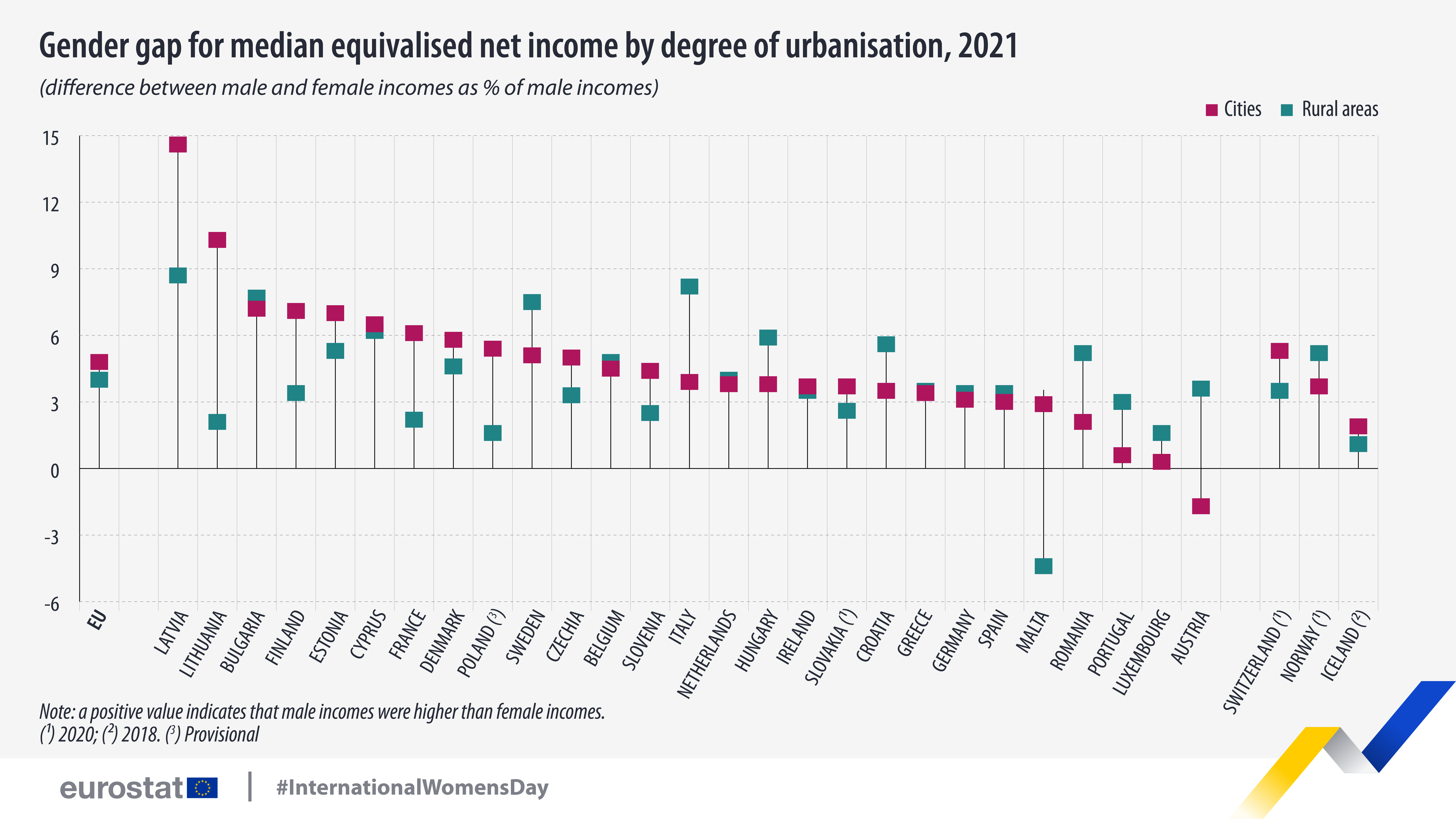Gender gap for income narrower in rural areas

The EU gender gap for median equivalised net income was close to 5% during the last decade. In 2021, in absolute terms, the median value for males was €18 774, almost €800 higher than the one for females (€17 972).
In 2021, considering the differences in the degree of urbanisation, the EU gender gap for net income was narrower for people living in rural areas than for those living in cities: 4.0% against 4.8%.
Source dataset: ilc_di17
At the national level, gender income gaps were higher in cities than rural areas in 13 Member States, with Lithuania and Malta presenting the highest differences in terms of the degree of urbanisation: 8.5 and 7.3 percentage points, respectively.
Among the 14 countries where income gaps were higher in rural areas than cities, Austria (5.3 pp) and Italy (4.2 pp) presented the largest differences between the income gender gaps observed in urban and rural areas. Interestingly, in Austrian cities and Maltese rural contexts, the income gap was in favour of females: -1.7% and -4.4%, respectively.
This article is part of a series of articles published to mark International Women’s Day.
Today, from 10:00 AM to 11:00 AM CET, we will hold a webinar on women in science, technology and research. The webinar will be streamed on the Eurostat website and Eurostat Facebook account. It is open to anyone interested, and there is no need to register. There will be an opportunity to ask questions via Slido.
For more information
- The Rural Europe and Urban Europe publications: chapter on income and living conditions
- Database on degree of urbanisation
- Thematic section on income and living conditions
- Database on income and living conditions
- European pillar of social rights action plan
Methodological note:
- The article presents figures on net income in terms of median equivalised net income in euros. Such information covers the whole population (including people who are not in work) and hence are quite different from the information displayed in relation to gender pay gap statistics (being updated on 8 March). The latter are based on unadjusted figures, measuring the difference between average gross hourly earnings of men and women (covering only those who are in work).
- Gender income gap is calculated as the difference between the median equivalised disposable incomes for males and the one for females. Positive values indicate that males’ incomes were higher than females’ ones.
If you have any queries, please visit our contact us page.

